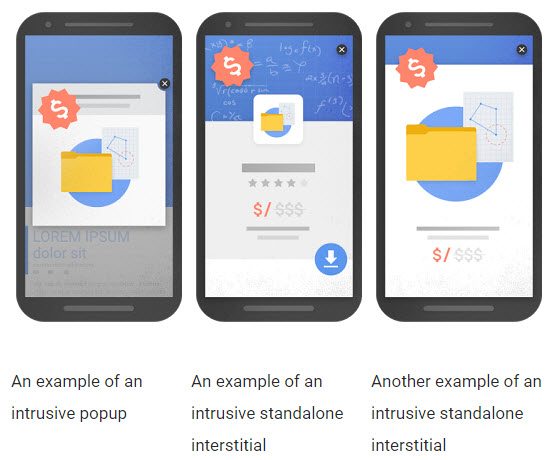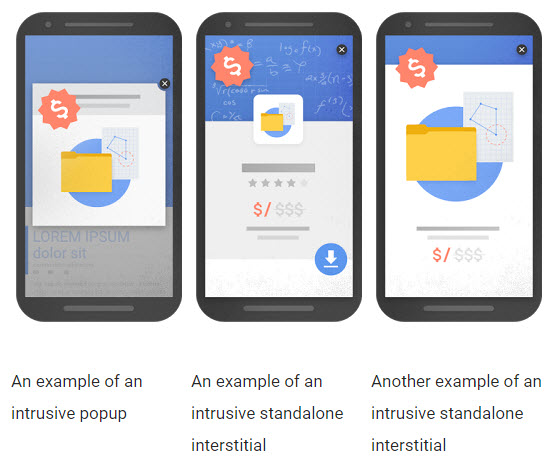Right on schedule, this week Google began rolling out its intrusive mobile popup penalty, aimed at reducing the number of results that take mobile searchers to pages that use large popups or interstitials over the content they expected to find. When searchers click on a search result, they expect to be taken to a page where they can see the content that fulfills their search. Since most of Google searches are from mobile devices, Google is taking its mobile search experience seriously. What kind of mobile interstitials and popups are likely to cause penalty issues? “Showing a popup that covers the main content, either immediately after users navigate to a page from the search results, or while they are looking through the page.” “Displaying a standalone interstitial that the user has to dismiss before accessing the main content.” “Using a layout where the above-the-fold portion of the page appears similar to a standalone interstitial, but the original content has been inlined underneath the fold.” Source: Google Webmaster Central Blog. For example, the app install banners provided by Safari and Chrome are examples of banners that use a reasonable amount of screen space.” Source: Google Webmaster Central Blog. The penalty will only be applied on pages that use interstitials and popups on their mobile experience. If a searcher chooses to visit your site from Google’s search results and clicks through to your site, that first page viewed is the entry page. That entry page should meet the guidelines for Google’s intrusive mobile interstitial penalty. It’s only worth the risk if you’re willing to pay the price in decreased mobile search traffic from Google.
Right on schedule, this week Google began rolling out its intrusive mobile popup penalty, aimed at reducing the number of results that take mobile searchers to pages that use large popups or interstitials over the content they expected to find.
Google’s goal is to preserve the user experience of its searchers. When searchers click on a search result, they expect to be taken to a page where they can see the content that fulfills their search. Interstitials (pages displayed before the expected page) and popups that cover the expected content detract from that experience, according to Google, resulting in a frustrating experience. Since most of Google searches are from mobile devices, Google is taking its mobile search experience seriously.
What kind of mobile interstitials and popups are likely to cause penalty issues? Google lists specific cases in its Webmaster Central Blog.
- “Showing a popup that covers the main content, either immediately after users navigate to a page from the search results, or while they are looking through the page.”
- “Displaying a standalone interstitial that the user has to dismiss before accessing the main content.”
- “Using a layout where the above-the-fold portion of the page appears similar to a standalone interstitial, but the original content has been inlined underneath the fold.”

Source: Google Webmaster Central Blog.
Not all interstitials and popups are taboo, though, and some are required by law. Google makes exceptions for those. The Webmaster Central Blog also lists examples of interstitials that are acceptable, and will not affect mobile rankings.
- “Interstitials that appear to be in response to a legal obligation, such as for cookie usage or for age verification.”
- “Login dialogs on sites where content is…

COMMENTS